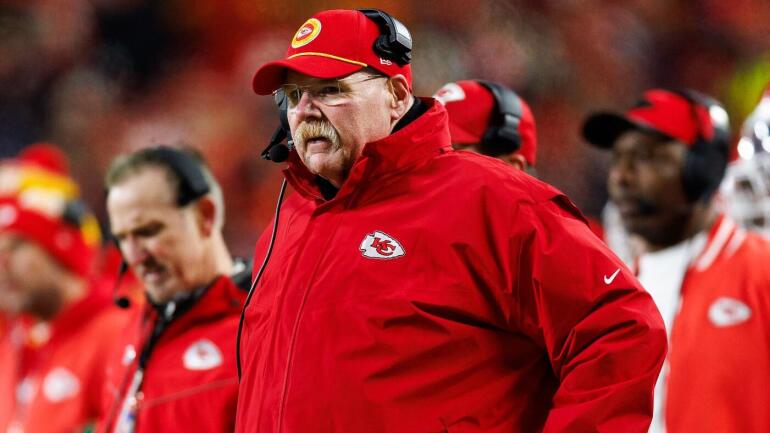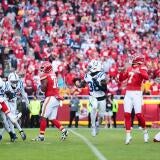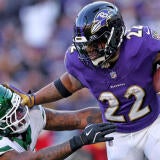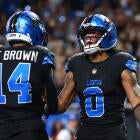2025 NFL continuity rankings: Chiefs pace the field as NFC runner-up is in the basement
Quantifying the players and coaches returning to a team from last season

The NFL teams that retain the majority of their roster are typically doing so for a reason: they are good. Fewer new faces means less of a transition, which often translates to success on the field. CBS Sports is attempting to quantify continuity through weighted point values.
Teams receive points for returning players and even more points for longevity up to the three-plus years category. The grading scale allows for a maximum score of 100 points. It is broken down into four categories: coaching (maximum 15 points), offense (maximum 45 points), defense (maximum 35 points) and special teams (maximum five points). Teams with coaching longevity are rewarded in the rankings. There is some discretionary choices made in unique circumstances. For example, Robert Saleh returning to San Francisco as the team's defensive coordinator is different than a coach's first time in the role elsewhere.
The offensive and defensive categories are broken down into subcategories.
On offense, the focus is on quarterback in the scheme (maximum 15 points), quarterback-wide receiver relationship (maximum 10 points), offensive line (maximum 10 points), quarterback-tight end relationship (maximum 6.5 points) and running back in scheme (maximum six points). The latter two categories generally account for a maximum of five points, but teams using two tight ends or two running backs on more than 30% of their snaps have that tendency baked into their maximum score. Those points are then subtracted from the quarterback-wide receiver designation.
The defense is broken down into the front seven (maximum of 20 points) and secondary (maximum 15 points). The longevity of the defensive coaching staff is taken into account to reach a full score.
These are not power rankings, nor are they a projection of how the season will play out. It is context to validate support in a team or to express concern in a team receiving undue hype. It was originally a metric created to predict which teams may be best positioned to win during the COVID season in 2020. Three of the four teams in the 'Elite' category made the playoffs that year. The only team in the 'Average continuity' section or better (17 teams) to finish worse than 8-9 was the Texans. Although it was not created as a predictor, it did result in fairly accurate results, so it was brought back in 2024.
The 2024 season was less accurate. Five of the top 14 teams made it to the playoffs. The output ahead of the 2025 season is more in line with national perspectives.
Here are the 2025 continuity rankings:
Teams with elite continuity
- 1. Chiefs, 89 points
- 2. Rams, 79
- 3. Bills, 78
- 4. Packers, 74
- 5t. Ravens, 72
- 5t. Steelers, 72
- 7. Bengals 70
The majority of the elite category will not come as a surprise. What factors warrant being rated so highly? Of the 26 players taken into consideration for this project, Kansas City returns all but two from last year's roster. Teams that are able to find contributors on Days 2 and 3 of the NFL Draft tend to experience less turnover year over year. The coaching staff has been relatively untouched as well.
Six of the top 10 Super Bowl betting favorites, according to FanDuel Sportsbook, are represented on this list. Pittsburgh, the exception, has much more modest odds.
Teams with above-average continuity
In the next tier of teams, most are expected to be in contention for a playoff berth, including Philadelphia and Detroit, which rank among the top 10 in Super Bowl betting odds. Only the Browns and Colts rank in the bottom 10.
The defending Super Bowl champion Eagles are much higher on the list this year, because they installed several new players and solidified several roles last season, including linebacker Zack Baun and cornerbacks Quinyon Mitchell, Cooper DeJean.
Teams with average continuity
- 14t. Dolphins, 59
- 14t. Broncos, 59
- 16. Giants, 58
- 17. Chargers, 56
- 18t. 49ers, 55
- 18t. Vikings, 55
- 20. Panthers, 54
- 21t. Cowboys, 52
- 21t. Seahawks, 52
- 23. Falcons, 51
- 24t. Saints, 50
- 24t. Jaguars, 50
San Francisco is the one of two top 10 Super Bowl betting favorites to be found in this portion of the list or later. The 49ers suffered a high-volume of injuries last season and that led to changes, particularly on defense, this offseason.
Teams with below-average continuity
- 26. Commanders, 47
- 27. Texans, 46
- 28. Jets, 45
- 29. Titans, 43
- 30. Raiders, 39
- 31. Bears, 38
- 32. Patriots, 33
Washington is the only franchise among the top 10 Super Bowl favorites to find itself among the teams with below-average continuity. Two years ago, Washington picked No. 2 overall. They are the perfect representation of the rankings not being talent-based. In fact, one could argue that a lack of continuity is a positive in the case of the Commanders.
The same was true of Houston one year prior. The Texans were hampered by the offensive line turnover. Can Tennessee follow the same model as Washington and Houston by riding the momentum of a first-round quarterback selection?
Seven coaching changes were made this offseason. Five of those teams found their way into the below-average continuity tier. Jacksonville and New Orleans were just barely able to escape with a larger percentage of their primary contributors returning.


















